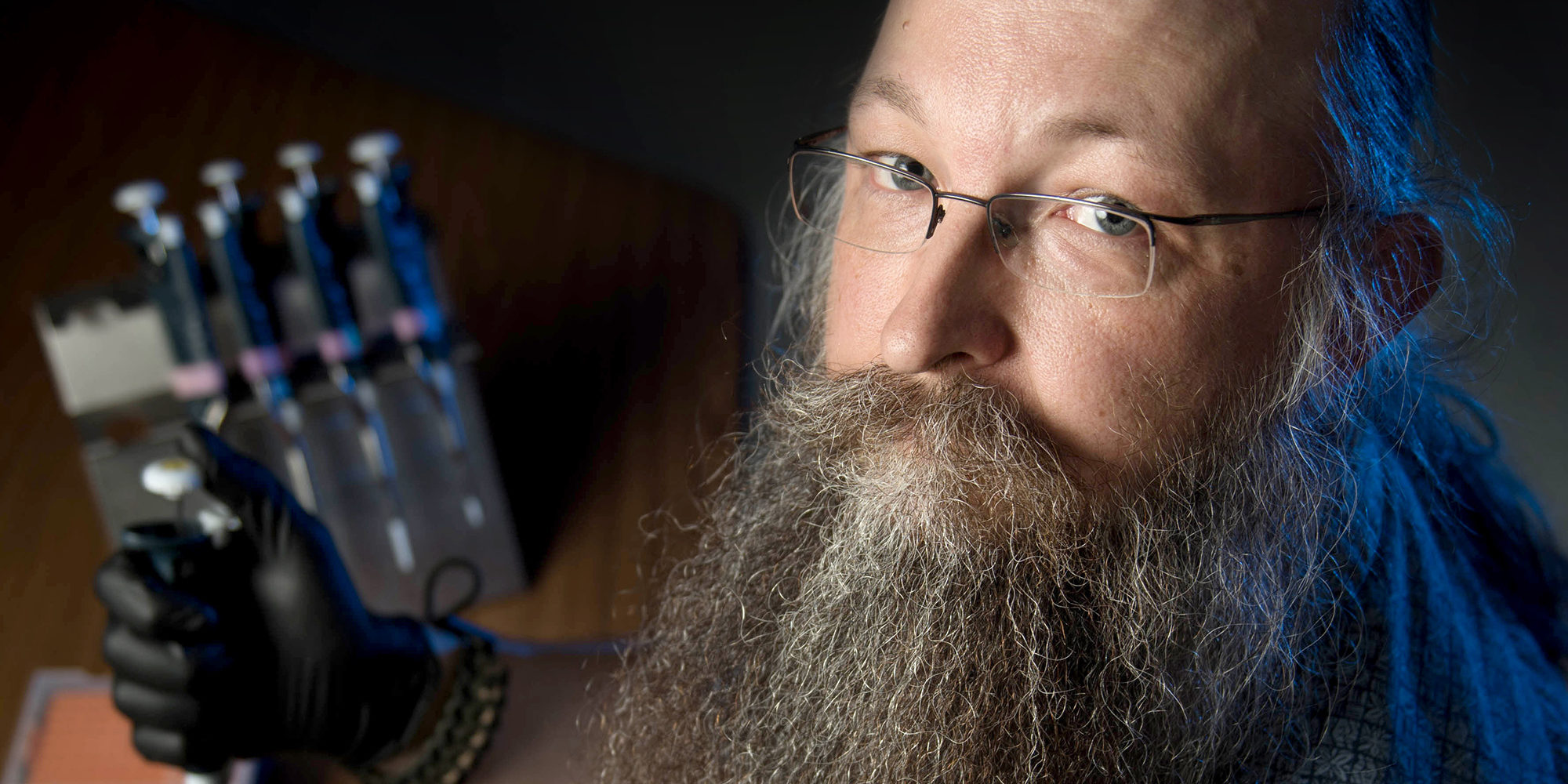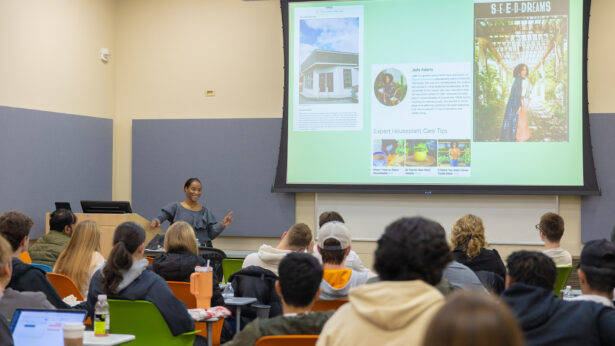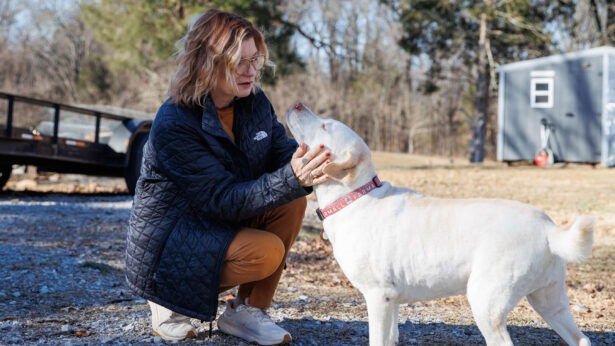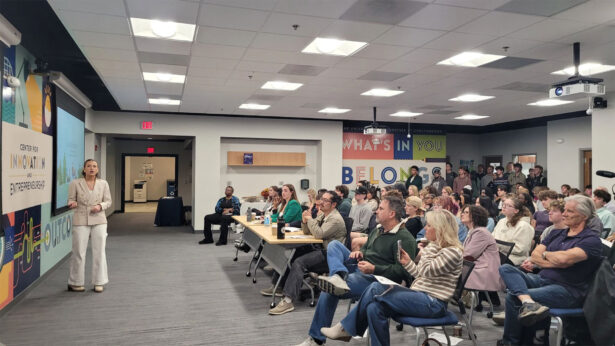By Gary Hengstler
Thomas Wilson pauses by a poster of salamanders outside his office at the University of Tennessee at Chattanooga. It is one of many such research posters he and his teams of students and colleagues have created in their research of adverse effects of deteriorating water quality and habitat on amphibians and other aquatic life in the area.
“There’s a lot of data on species being bio indicators and that they function like a meter stick, environmentally speaking” he says. “Water quality is tied to human and environmental health.”
“Our work looks at how species such as salamanders and turtles respond to environmental stressors, and we’re using them as model organisms for our own habitat related research. In short, the better the water quality, the better the overall animal health, and the better for us, too.”
In an example showcasing amphibians on a research poster, the case is not always so good. That research focused on animals coping with Chytrid fungus (Batrachochytrium dendrobatidis), a fungal disease that degrades the skin, causing lesions on the amphibians, and it ultimately leads to secondary infections, compromises cutaneous respiration and often leads to death.
“I tell my amphibian conservation students that, when I conduct wetland inventories, I often look for amphibians,” he says. “If they are not present in those habitats, we start really looking at why. Did some of them drop out because of a shift in water quality parameters or because of a pathogen?” Wilson states, “There is a large amount of evidence that we are living in the time of the sixth mass extinction—amphibians.”
“It all hearkens back toward water quality and habitat degradation, which suggests that we as people can face the same impacts. “We all use water for all kinds of things,” he continues. “Water is one thing that ties it all together—it is a unifying theme of life. Clearly, urban sprawl and unstainable development has left its mark with water pollution.”
“Everything is interrelated, so when you degrade water quality, this can allow different species to become established and change the dynamics of the system and perhaps weaken the immune systems of aquatic life.”
Another problem for amphibians is the presence of heavy metals and other pollutants in the streams. Certain species can be more sensitive to certain types of pollution, such as heavy metals or persistent organic pollutants, and some of these can cause neurological, reproductive or other harm.
Wilson recalls one student who was surprised to find DDT in the blood of a turtle. “I asked him why he thought it was strange, and he said it’s because we’re not producing DDT for our use anymore. And I said that’s true in an industrial sense, but DDT does not necessarily disappear. It degrades slowly as compared to some others, and turtles pick it up in water and also by what they eat. DDT causes reproductive harm in many birds, but we never really said it causes reproductive harm in people.
“When it comes to pollution, turtles appear more resistant at times when compared to amphibians,” he says. “When you start looking at water quality, turtles are impacted too, even though they can be seen as a generalist that seemingly live in murky waters.” He said that, when the Tennessee Valley was altered by dams, many habitats changed.
He explains that going from a stream to a reservoir-type situation changes the hydrology and nutrient cycling, thus allowing more generalist species to thrive at the expense of the more sensitive species.
For example, softshell turtles are less able to tolerate water changes and tend to drop out of the system. Wilson says it is not only the presence or absence but also their proportions.”
Wilson says that, when you have water quality issues that impact amphibians, it “is not necessarily telling you that the end is near, but it does tell you that we’re on that trajectory, and we need to fix the problems. The challenge is how you address these issues in a timely manner and come up with plausible solutions when people don’t see their connection to the natural world.”
He adds that, when he was an undergrad in the 1990s, one of his textbooks focused on the threats to the environment. “Now we are 25 years later,” he reflects, “and we’re still discussing the issues. We haven’t got much closer to solving problems.”
Like other scientists, Wilson notes that changing the landscape and habitats will impact everything downstream, which also affects the amphibians and us.
“What we’ve learned is that these problems are ecologically complex,” he says. “A colleague once told me that the true problem is that, when you have conservation-related issues, you have all these different players—industry, government, private sector and public. But it all comes back to constantly communicating with everyone to come up with a solid plan. The biggest challenge is to get everyone on the same page.”
Wilson admits that, from the time he first entered this field, he thought there would be more closure on some solutions. “We know more now how to fix things than we did then, but the big thing is presenting it in a way that we can all agree on doing it.”
He says that it comes back to communication. “When you look at industry, they exist to produce goods for us to buy and doing it in a cost-effective way, which makes sense. But, if the product can harm the environment and our future, the public has to decide whether they want to buy that item or not. If the public stopped buying products that are not environmentally sound or sustainable, the company would have to rethink its strategy.”
Ultimately, it may come back to humankind’s selfishness. Wilson recalls the perspective of one of the faculty members on his dissertation committee. “His view was that the concept of conservation is not necessarily a mechanism for conserving other species, but rather it is self-preservation. So we’re using these animals as a gauge to basically improve our own survival.”
He explains that conservation was a somewhat selfish idea that we clearly benefit from in resources—clean water, clean soil, etc.
“When you start putting profits before safety, you cheat yourself and your children’s future” Wilson says. “I don’t think people see it that way unless they have personally been impacted. That’s sad because you’d like to have people understand their place and their connection to the natural world.”
For more information on the work that Wilson and his students are doing, visit his UTC faculty profile, like them on Facebook or follow them on Twitter @TeamSalamander1 and Instagram @teamsalamander.



